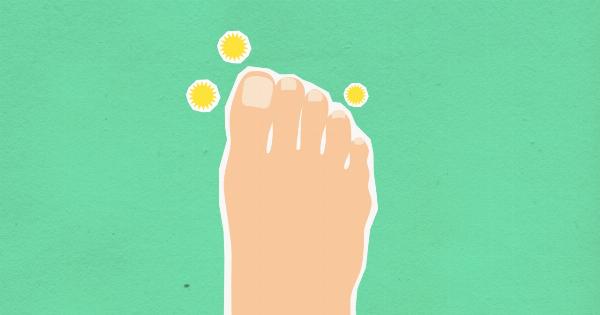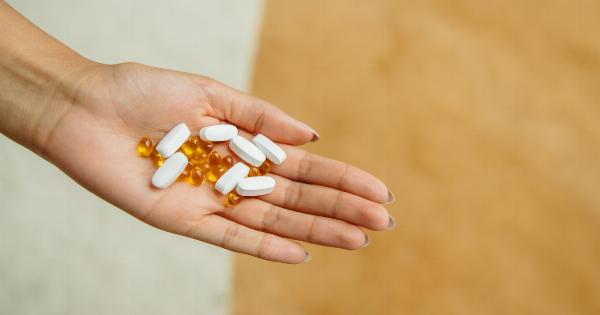Dermatitis is a common skin condition that can cause redness, itching, and inflammation. There are various types of dermatitis, including contact dermatitis, seborrheic dermatitis, atopic dermatitis, and more.
If you are suffering from dermatitis, you may be looking for ways to soothe your symptoms. Here are the top 30 dermatitis treatments that can help bring you relief.
1. Avoid Triggers
The first step in managing any type of dermatitis is to avoid triggers. Triggers can include certain foods, chemicals, fragrances, and fabrics. Pay attention to your skin and the products you use to determine what may be causing your dermatitis.
2. Keep Skin Moisturized
Dry skin can exacerbate dermatitis symptoms, so keeping your skin moisturized is important. Use a fragrance-free moisturizer on a daily basis to help soothe and hydrate the skin.
3. Use OTC Anti-Itch Creams
Over-the-counter anti-itch creams can help relieve the itchiness associated with dermatitis. Look for creams that contain hydrocortisone, pramoxine, or menthol.
4. Apply Cold Compresses
If you are experiencing inflammation, applying cold compresses to the affected area can help reduce swelling and itching. Wrap a bag of ice in a towel and lightly apply to the skin for a few minutes at a time.
5. Take an OTC Antihistamine
If you are experiencing a severe reaction with hives or intense itching, taking an over-the-counter antihistamine can help. Diphenhydramine (Benadryl) is a common antihistamine that can relieve itching and swelling.
6. Use a Humidifier
Dry air can irritate dermatitis, so using a humidifier in your home can help keep the air moist and prevent skin irritation.
7. Wear Loose-Fitting Clothing
Tight clothing can irritate dermatitis and worsen symptoms. Stick to loose-fitting, breathable fabrics to keep your skin cool and comfortable.
8. Use Natural Oils
Natural oils, such as coconut oil, olive oil, and jojoba oil, can help soothe and moisturize the skin. Apply a small amount to the affected area to help relieve itching and dryness.
9. Take a Warm Bath
A warm bath can help soothe the skin and relieve itching. Add oatmeal or baking soda to the bathwater for added relief.
10. Use a Sunscreen
If you are going to be outside, always use a fragrance-free sunscreen to protect your skin from further irritation.
11. Avoid Scratching
While it can be tempting to scratch, avoid doing so as much as possible. Scratching can further irritate the skin and worsen symptoms.
12. Use a Barrier Cream
Barrier creams can help protect the skin from further irritation. Apply a thin layer of a barrier cream, such as petroleum jelly, to the affected area to help protect and soothe.
13. Take an OTC Pain Reliever
If you are experiencing pain with your dermatitis, taking an over-the-counter pain reliever, such as ibuprofen, can help. Always follow the recommended dosage on the label.
14. Use an Aloe Vera Gel
Aloe vera gel is naturally soothing and can help relieve dryness and itching. Apply a small amount of aloe vera gel to the affected area for added relief.
15. Apply a Wet Compress
If you have weeping blisters, applying a wet compress to the affected area can help promote healing. Dip a clean cloth in cool water and apply to the skin for a few minutes at a time.
16. Use a Colloidal Oatmeal Bath
A colloidal oatmeal bath can help soothe and moisturize the skin. Soak in a warm bath with colloidal oatmeal for added relief.
17. Avoid Hot Showers or Baths
Hot water can further irritate dermatitis, so avoid taking hot showers or baths. Stick to lukewarm water to help soothe the skin.
18. Keep Nails Short
Keeping your nails short can help prevent further skin irritation if you do scratch. Longer nails can also harbor bacteria, which can lead to infection.
19. Use Fragrance-Free Laundry Detergent
Laundry detergent with fragrances or other additives can irritate the skin. Use a fragrance-free, hypoallergenic laundry detergent to wash your clothes and bedding.
20. Use a Topical Cream
If you are experiencing a severe reaction, your doctor may prescribe a topical cream to help soothe and calm the skin. Follow your doctor’s instructions carefully.
21. Get Plenty of Rest
Stress and lack of sleep can worsen dermatitis symptoms. Make sure to get plenty of rest and practice relaxation techniques, such as yoga or meditation.
22. Take an Oatmeal Bath
Oatmeal baths can help soothe the skin and reduce inflammation. Add a cup of powdered oatmeal to your bathwater for added relief.
23. Use Antibiotics
If your dermatitis is caused by a bacterial infection, your doctor may prescribe antibiotics to help clear up the infection.
24. Use Cool Compresses
If you are experiencing heat and inflammation, applying a cool compress to the affected area can help soothe the skin and reduce swelling.
25. Use Calamine Lotion
Calamine lotion is a topical medication that can help soothe irritated skin and reduce itching. Apply a thin layer to the affected area for relief.
26. Drink Plenty of Water
Drinking plenty of water can help keep the skin hydrated and prevent further dryness and itching.
27. Avoid Alcohol and Caffeine
Alcohol and caffeine can dehydrate the skin, making dermatitis symptoms worse. Avoid consuming these substances if possible.
28. Use Medicated Shampoo
If you have dermatitis on your scalp, using a medicated shampoo can help soothe and calm the skin. Look for shampoos that contain salicylic acid or coal tar.
29. Use Wet Wraps
Wet wraps can help soothe and moisturize the skin. Apply a thick layer of moisturizer to the affected area and wrap in damp gauze or clothing.
30. Try a Steroid Cream
If your dermatitis is severe, your doctor may prescribe a steroid cream to help reduce inflammation and calm the skin. Follow your doctor’s instructions carefully.



























